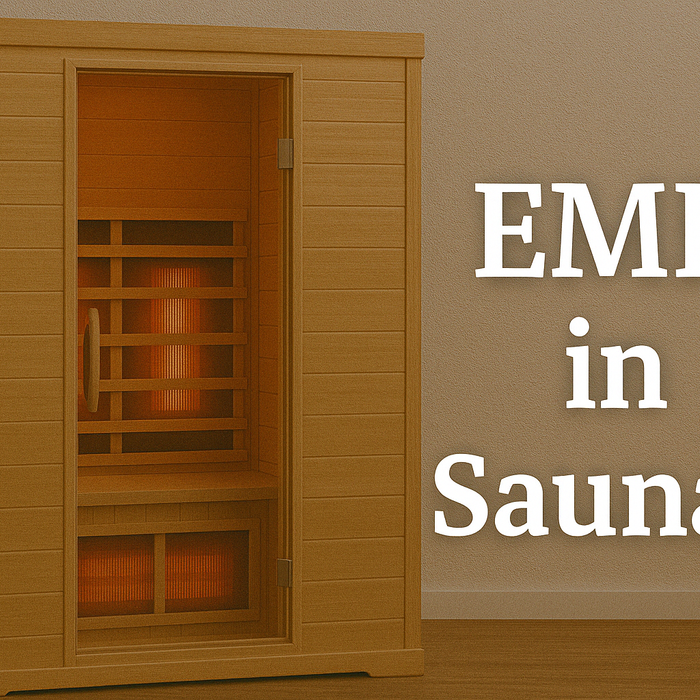Achieving even heat distribution in your sauna is key to a comfortable and relaxing experience. Whether you’re using an electric, gas, wood-burning sauna heater, or an infrared model, ensuring that heat is distributed evenly throughout the sauna room can enhance your sessions and improve overall efficiency. In this guide, we’ll explore the best practices for maximizing heat distribution in your sauna, including optimal heater placement, stone arrangement, and ventilation techniques.
The Importance of Even Heat Distribution in Your Sauna
Even heat distribution is crucial for several reasons:
1. Comfort: A well-distributed heat ensures that no part of the sauna is too hot or too cold, providing a consistently comfortable environment.
2. Efficiency: Proper heat distribution allows the sauna to reach the desired temperature more quickly and maintain it with less energy consumption.
3. Enhanced Health Benefits: When heat is evenly distributed, the therapeutic effects of the sauna, such as improved circulation and detoxification, are maximized.
Best Practices for Heater Placement
The placement of your sauna heater is one of the most important factors affecting heat distribution. Follow these guidelines to ensure optimal placement:
1. Position Near the Door or Corner
-
Traditional Saunas: In traditional saunas, the heater is often placed near the door or in a corner of the room. This positioning helps to circulate the heat throughout the space as the cooler air from the entrance mixes with the warm air produced by the heater.
-
Infrared Saunas: For infrared sauna heaters, placement should be such that the heat panels are evenly distributed around the room to ensure consistent coverage.
2. Consider Wall-Mounted vs. Floor-Mounted Heaters
-
Wall-Mounted Heaters: Wall-mounted heaters, like the HUUM DROP Electric Sauna Heater, can be positioned to maximize space and provide more direct heat distribution at a higher level.
-
Floor-Mounted Heaters: Floor-mounted heaters, such as the HUUM CLIFF Electric Heater, are ideal for larger saunas, as they can radiate heat across a broader area.
3. Avoid Obstructions
-
Clear Surroundings: Ensure that there are no obstructions near the heater that could block the flow of heat. Furniture, towels, or decorative items placed too close to the heater can impede heat circulation.
Optimizing Stone Arrangement for Maximum Heat
For saunas that use stones, such as wood-burning or electric heaters, the arrangement of the stones plays a significant role in heat distribution:
1. Choose the Right Stones
-
High-Quality Stones: Use high-quality sauna stones designed for optimal heat retention. Stones with a high density and good thermal conductivity, such as peridotite or olivine, are excellent choices.
2. Arrange Stones for Proper Airflow
-
Loose Placement: Arrange the stones loosely, allowing air to flow freely between them. Packing stones too tightly can restrict airflow, causing uneven heating and putting extra strain on the heater.
-
Layering Technique: Consider layering larger stones at the bottom and smaller stones on top. This technique helps in distributing heat more evenly and ensures a steady flow of air through the heater.
3. Maintain and Replace Stones Regularly
-
Check for Cracks: Regularly inspect the stones for cracks or crumbling, as damaged stones can reduce heat efficiency. Replace stones as needed to maintain optimal performance.
Enhancing Heat Circulation with Proper Ventilation
Ventilation is a crucial aspect of ensuring even heat distribution in your sauna:
1. Ensure Proper Vent Placement
-
Inlet and Outlet Vents: Install an air inlet near the floor and an air outlet near the ceiling on the opposite side of the room. This setup encourages a natural flow of air, helping to circulate the heat evenly.
-
Chimney Considerations for Wood-Burning Heaters: For wood-burning heaters, like the Harvia Linear 16, ensure the chimney is installed properly to maintain a good draft, which helps remove smoke while enhancing heat circulation.
2. Use Fans for Improved Circulation
-
Ceiling Fans: Installing a ceiling fan designed for saunas can help circulate heat more effectively, especially in larger sauna rooms.
-
Wall-Mounted Fans: In smaller saunas, a wall-mounted fan can be useful for directing heat towards areas that may not be as warm.
Advanced Techniques for Superior Heat Distribution
For those looking to optimize their sauna’s heat distribution further, consider these advanced techniques:
1. Utilize Heat Reflectors
-
Heat Reflectors: Installing heat reflectors behind your sauna heater can help direct more heat into the room. Reflectors made from materials like aluminum or stainless steel are particularly effective.
2. Invest in a Temperature Equalizing Heater
-
Saunum Temperature Equalizing Heater: Consider investing in a specialized heater like the Saunum Temperature Equalizing Electric Sauna Heater. This innovative heater blends hot air from the ceiling with cooler air near the floor, ensuring a more balanced temperature throughout the sauna.
3. Optimize Sauna Room Insulation
-
Proper Insulation: Ensure your sauna is well-insulated, especially around the walls and ceiling. Good insulation prevents heat from escaping, making it easier to maintain an even temperature.
Maintaining Consistent Heat During Use
Maintaining even heat during your sauna session is just as important as initial setup:
1. Monitor Temperature with Digital Controls
-
Use Wi-Fi Controllers: Modern luxury sauna heaters, like the Harvia Virta Combi or HUUM CLIFF, come with digital controllers that allow you to monitor and adjust the temperature easily. These controllers often include Wi-Fi capabilities, so you can make adjustments even from outside the sauna.
2. Regularly Rotate Sauna Users
-
Even Heat Exposure: If multiple people are using the sauna, encourage them to rotate seats periodically. This ensures everyone experiences consistent heat, as different areas of the sauna may have slightly varying temperatures.
Conclusion
Maximizing heat distribution in your sauna is essential for creating a comfortable and efficient environment. By focusing on optimal heater placement, proper stone arrangement, effective ventilation, and advanced heating techniques, you can ensure that every corner of your sauna is warm and inviting. Whether you’re using an electric heater, a gas heater, or a wood-burning sauna heater, these tips will help you get the most out of your sauna experience.
Ready to upgrade your sauna setup? Explore our range of premium sauna heaters to find the perfect heater for optimal heat distribution and a premium sauna experience.





Leave a comment